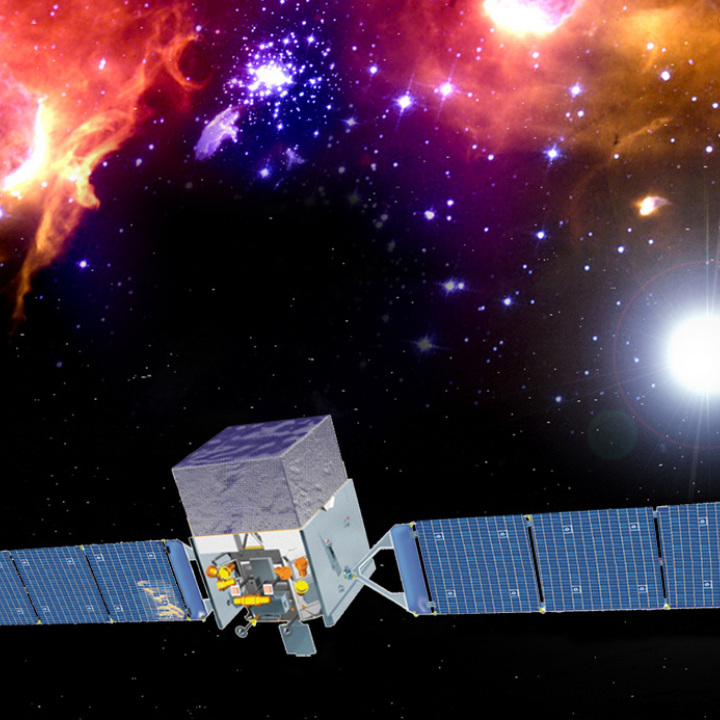High-energy gamma-ray emission from pulsars (Fermi satellite mission)
Since 2006, we have been involved in preparing and supporting gamma-ray pulsar observations with the Large Area Telescope (LAT) onboard the Fermi gamma-ray satellite. The NRT’s “high energy” programmes represent about 1000 hours of telescope time per year, with about 100 pulsars monitored regularly, and are coordinated at the international level.
Since the launch of the Fermi satellite in 2008, observations of the gamma-ray sky by the LAT have revealed the pulsations of more than 300 pulsars in the GeV energy range, of which more than half have been detected by folding the high energy data with a known radio ephemeris. The NRT has contributed to this effort significantly. The temporal and spectral results of the Fermi LAT pulsar observations, completed by multi-wavelength (X-ray and radio) observing campaigns, have allowed us to strongly constrain pulsar emission models, and thus to refine our understanding of the mechanisms at stake and of the geometry of the emission beams.

Pulsar and transient searching and monitoring with the NRT, NenuFAR, and MeerKAT
We use the Nançay Radio Observatory telescopes to perform untargeted surveys for new, yet unknown, pulsars. This topic is expected to grow with the ongoing improvement in calibration of the NenuFAR telescope in the coming years. We are performing a census of known pulsars to study the shape of their radio spectra at low frequencies and the dispersive effects due to the ionized interstellar medium. The combined observations of pulsars with the NRT, LOFAR and NenuFAR will allow us to study the pulse profile shape, morphology, and polarization as a function of radio frequency. This will enable us to estimate the strength of the magnetic field with emission altitude inside the pulsars’ magnetosphere and to deduce the systems’ geometry. This programme is currently being complemented by a blind survey of the northern sky to characterize the faint pulsar population.
The techniques to search for new pulsars naturally lead to the detection of fast radio transient signals, such as the population of Fast Radio Bursts (FRBs). Additionally, we are involved in the commissioning and operation of MeerKAT, a direct precursor of the Square Kilometre Array (SKA) located in South Africa, within the MeerKAT Large Science Programmes TRAPUM (pulsar searching) and MeerTime (pulsar timing).


